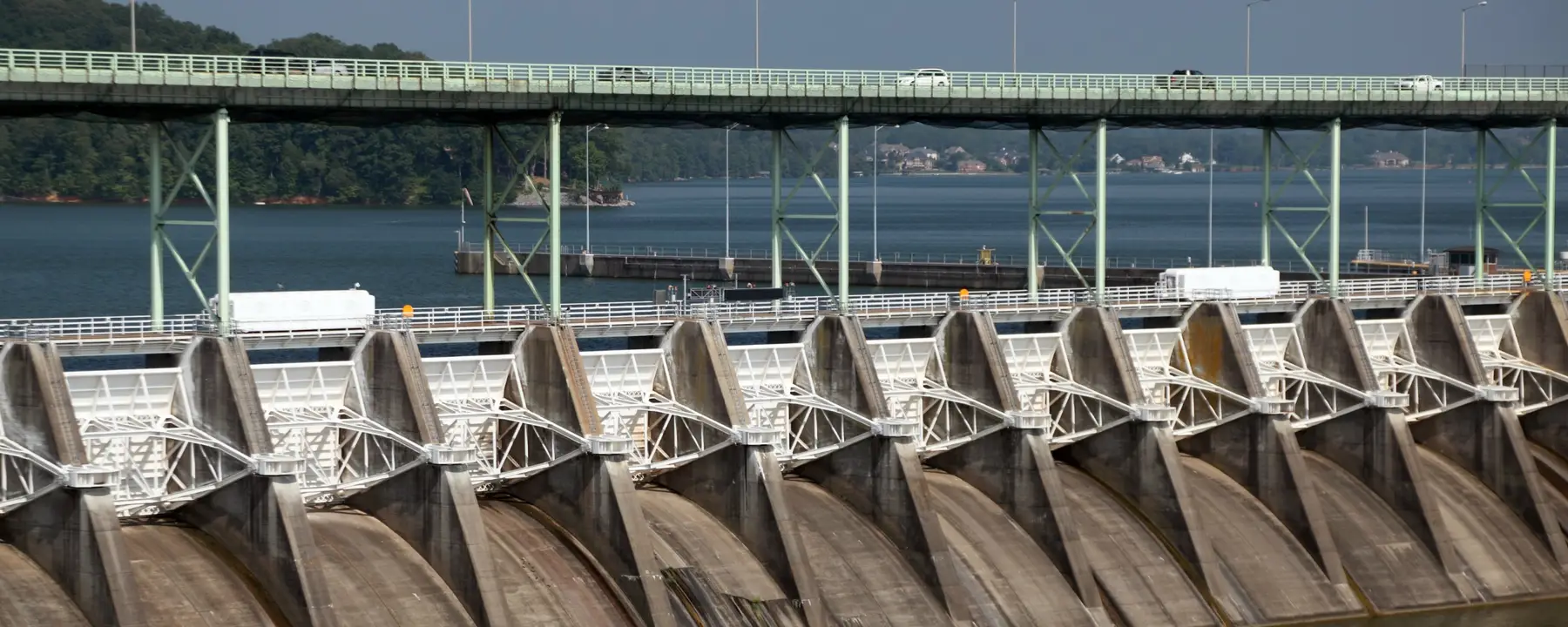Modernizing climate, weather, and water services for nation’s largest regional planning agency
The Tennessee Valley Authority (TVA) pursues its mission to improve the lives of the people in the Tennessee Valley by providing affordable electricity and environmental stewardship. TVA River Management is responsible for providing electricity to more than nine million people in Alabama, Georgia, Kentucky, Mississippi, North Carolina, Tennessee, and Virginia. TVA manages more than 40 dams and three nuclear power facilities in the Tennessee Valley to supply this power, and, as a result, dam safety and risk mitigation are critical aspects of its mission.
TVA River Management is responsible for the operation of the reservoir system to meet hydropower, flood control, water supply, recreation, and navigation needs. The TVA Dam Safety program mitigates risks related to extreme flooding, dam operations, and dam failures.
Facing such a daunting list of crucial responsibilities, the TVA relies on collaboration with proven partners to ensure the safety of its constituents and the protection of energy and environmental resources.
Pursuing Operating Policy and Operational Forecast System Enhancements
The RTI Center for Water Resources (CWR), has been working with TVA since 2002. We have helped modernize the tools TVA uses for operational decision-making to improve the water services provided to the region.
Our first project was to assess how modification of TVA’s reservoir operating policies would impact flood risk, hydropower revenues, navigation, water supply and quality, and recreational activities across the Tennessee River watershed. We performed reservoir modeling and flood frequency analysis for 36 reservoirs within the Tennessee basin using the University of Colorado’s RiverWare® river basin model system. Through our work, TVA identified a variety of modifications to their previous operating policy that allowed better use of the available water resources.
TVA also sought support to enhance its operational forecasting responsibilities, which include data collection and quality control, hydrologic and hydraulic modeling, reservoir operation simulation and optimization, and hydrothermal modeling. In 2012, following discussions with RTI, TVA decided to upgrade their current forecasting system to the Delft Flood Early Warning System (FEWS) platform. We completed a pilot implementation by updating their operational rainfall estimation processing and configuring hydrologic models for a subset of the TVA system within the FEWS framework.
As a result of the success of the pilot FEWS implementation, RTI worked closely with TVA and Deltares, the developer of FEWS, to transition the remainder of their operational forecasting system to the FEWS platform. RTI implemented data imports and quality control tools, integrated hydrologic and hydraulic models, supported the RiverWare optimization model integration, and applied tabular, graphical, and spatial displays to support TVA’s decision-making.
An important aspect of TVA’s forecast system modernization involved the development of improved hydrologic and hydraulic models. We coordinated with TVA and the National Weather Service to complete the calibration of the models, which now better simulate natural flows in the system compared to the legacy models. Now, the organization has access to more accurate forecasts of reservoir system inflows that allow for improved release planning by the TVA river schedulers and can rapidly assess the impacts of high flows along the river using operational hydraulic models.
Bolstering TVA’s Emergency Management and Risk Mitigation Capabilities
Our team also provides essential support and analyses to improve TVA’s emergency management tools and risk mitigation. From 2013-2015, we provided Emergency Action Plan inundation mapping using HEC-RAS and GIS mapping tools to produce updated inundation maps for the postulated failure of 40 dams. The model incorporated information from more than 30 existing models or sources, resulting in a comprehensive hydraulic model that encompasses more than 1,900 river miles and every major reservoir in the TVA system. In 2016 we developed a system to help automate computation of the Probable Maximum Flood at dams in the TVA system, allowing efficient assessment of risks for the dams and nuclear facilities.
Since 2013, CWR has led two major efforts at TVA to provide better risk quantification in support of the Dam Safety program. First, we are calculating consequences for hypothetical failures using HEC-RAS inundation mapping and HEC-FIA and HEC-LifeSim consequences modeling to develop life loss and economic consequence for dams throughout the TVA system (17 dams through 2019, with ongoing work to assess consequences at additional dams). Second, we are quantifying hydrologic hazards—the probability of dangerous pool levels caused by extreme flooding—through application of a Probabilistic Flood Hazards Analysis using the Stochastic Event Flood Model developed by MGS Engineering. The modeling involves stochastic simulation of thousands of extreme storm events for each dam to compute hydrologic hazard curves, which is an important input into the TVA risk assessment process. By calculating finer resolution and more accurate risk information, TVA has valuable tools to make decisions related to major capital improvement projects, the sufficiency of their current operating policy, and allocation of resources.
Assessing Water Supply Reliability through Future-Looking Projects
CWR is now working on a collaborative project to assess the reliability of the water supply. The University of Tennessee is completing a dendrochronology study to understand the historical occurrence of drought at different locations in the Tennessee Valley. We are using the outputs of this study combined with statistical modeling to produce extended, continuous climate datasets to drive hydrologic and reservoir models and assess the reliability of the water supply for intakes throughout the valley. TVA hopes to use this information to further encourage economic development in the region by water-dependent businesses. We anticipate that a comprehensive understanding of water reliability will be an important facet as water demands continue to shift and increase throughout the country.
With these and other potential projects, CWR intends to continue our longstanding collaboration with TVA to provide a wide range of river management services across several mission-critical operational areas.
- Tennessee Valley Authority (TVA)


